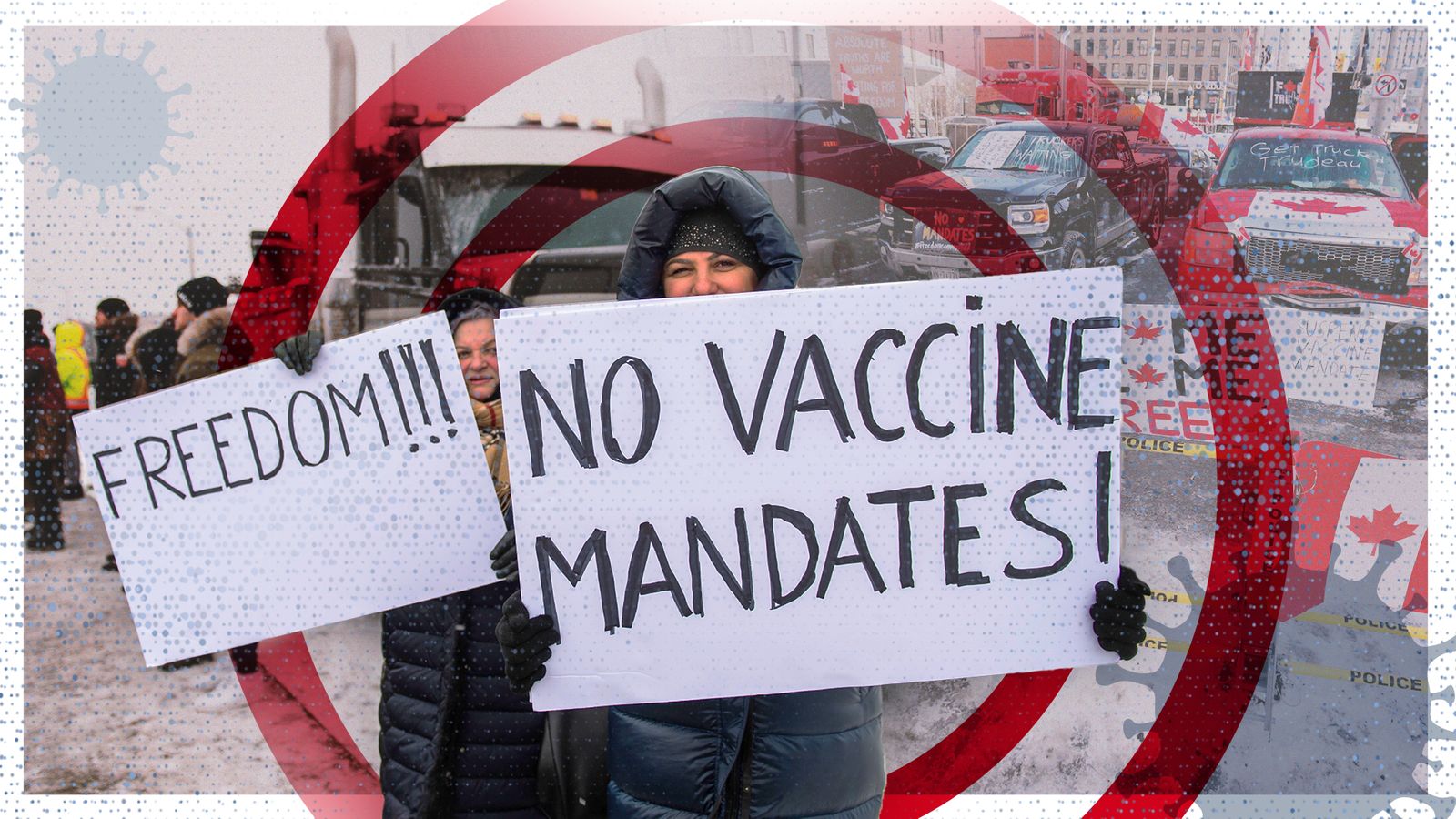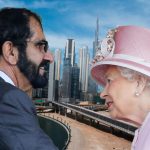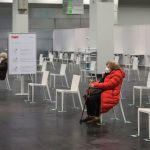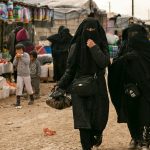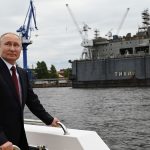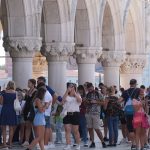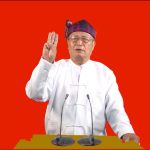The Canadian capital of Ottawa has been gridlocked by protesting truck drivers for almost two weeks now.
Truckers began demonstrating in western Canada on 9 January over new COVID legislation that requires people crossing the US-Canada border to be fully vaccinated.
Although up to 90% of the 120,000 Canadian truckers who work on cross border routes are thought to be fully-vaccinated, fears of supply chain issues and that the remainder could be pushed out of their jobs sparked fury.
Protests then started to move east towards Ottawa as part of a so-called ‘Freedom Convoy’ from 28 January.
Read more: Trudeau calls for end to trucker protests
Since then, they have spread to other Canadian cities, the US and New Zealand, catching the attention of celebrities and widening in scope to become a broader rejection of Justin Trudeau’s government and its COVID-19 policies.
Here Sky News looks at what the truckers want, what they’re doing to achieve it and how the movement has spread beyond Canada’s borders.
Trudeau calls for end to trucker protests as blockade threatens border trade between Canada and US
Canadian court grants injunction to silence honking by COVID protesters in Ottawa
Canada truckers: Ottawa mayor declares state of emergency to deal with trucking blockade
Please use Chrome browser for a more accessible video player
How did the protests start?
On 19 November, the Canadian transport ministry announced that from 15 January “essential service providers, including truck drivers” who were previously exempt from compulsory vaccines would have to be vaccinated to leave the country.
This meant that any unvaccinated truckers would have to quarantine on their return home to Canada, which would risk driver shortages, supply chain issues and a loss of income for employees.
Similar rules for foreign truck drivers have been effective in the United States since 22 January.
Angered by the new measures and PM Mr Trudeau’s strict COVID policies in general, a coalition of trucker associations and Conservative groups organised a cross-country drive from the west of Canada to the capital.
Spearheaded by the organisation Canada Unity, the so-called ‘Freedom Convoy’ saw thousands of trucks travel 3,100 miles to Ottawa, Ontario, which began arriving around 28 January.
What is Canada Unity?
Until the end of 2021, Canada Unity was a relatively unknown group.
It had unsuccessfully tried to organise nationwide protests before but gained real momentum after Mr Trudeau’s liberal government announced the new laws for truckers in November.
Its founder, James Bauder, is a supporter of the QAnon conspiracy theory and has openly called for Mr Trudeau to be put on trial for treason over his COVID policies.
He and his supporters believe compulsory vaccines are against the country’s constitution and an election should be triggered to oust Mr Trudeau.
Other key figures include Tamara Lich, previously a member of the Maverick Party, a far-right fringe organisation calling for western Canada to become independent; QAnon supporter Romana Didulo who describes herself as the ‘Queen of Canada’; and Benjamin Ditcher, who has publicly condemned the “growing Islamisation of Canada”.
According to the Canadian Trucking Alliance, between 85% and 90% of the Canadian truckers who regularly cross the US border are vaccinated.
The alliance has expressed concerns many of those protesting have no connection to the haulage industry after neo-Nazi, QAnon and far-right symbols, including the US Confederate flag, were seen at rallies.
How have they been protesting?
Protests have largely been concentrated in Ottawa, with thousands of trucks travelling from around Canada in late-January to assemble around Parliament Hill.
Almost two weeks since the Freedom Convoy arrived in the capital there are still thought to be 500 lorries blocking main roads in the city’s downtown area.
Ottawa Mayor Jim Watson declared a state of emergency to deal with the crisis on 6 February.
The city’s deputy chief of police Steve Bell warned this week: “Our message to the demonstrators remains the same: Don’t come. If you do, there will be consequences.”
On 7 February an Ottawa judge ruled that truckers be banned from honking their horns for 10 days after residents complained of widespread anti-social behaviour.
Although protests have been largely peaceful, violence has broken out at several protest sites, with up to 80 criminal investigations launched into the conduct of demonstrators, including for criminal damage and hate crime.
Police bosses have also expressed safety concerns over claims 25% of the vehicles currently still in Ottawa have children in them.
Mr Bauder and his team had asked supporters to sign a ‘Memorandum of Understanding’ that outlined Canada Unity’s demands, but this has since been withdrawn over claims it “does not reflect the spirit and intent of the Freedom Convoy Movement”.
Where else have demonstrations taken place?
Around 800 miles away from Ottawa at the US-Canada border in Ontario on 7 February, truckers blocked Ambassador Bridge, which accounts for 25% of all trade between the two countries.
As up to 60 business leaders called for an end to the blockade, hauliers were forced to re-route and travel hundreds more miles to cross over into the US.
Authorities were forced to close the bridge in both directions, with only the Canada side now open.
Anti-vax demonstrations and counter-protests by health workers have also taken place in Toronto, Quebec City, Vancouver, parts of Alberta and Manitoba.
People have also joined the Freedom Convoy from Alaska and other parts of the US, while solidarity protests have taken place in the New Zealand cities of Wellington and Canberra.
The movement has attracted the support of celebrities such as comedian Russell Brand, Tesla founder Elon Musk, former US President Donald Trump and Canadian actress Evangeline Lilly.
Canadian truckers rule
A post shared by Evangeline Lilly (@evangelinelillyofficial)
What could be done to stop them?
Speaking to reporters in Ottawa this week, protesters said they would occupy the city for “as long as it takes” for the government to scrap compulsory COVID jabs.
Returning to parliament after a period of self-isolation, Justin Trudeau said that “everyone is fed up with this pandemic” but “Canadians chose vaccines. They chose science”.
He added that the residents of Ottawa “deserve to have their safety respected and get their lives back”, showing no signs he was prepared to negotiate on vaccine mandates.
Everyone is fed up with this pandemic. Especially our workers on the front lines. We owe it to them to keep listening to science and supporting each other. pic.twitter.com/cgzmGpsEEh
But in the state of Alberta they were scrapped as of 9 January, although Premier Jason Jenney denied this was the result of pressure over protests.
In the western state of Saskatchewan, leaders said they were also ready to lift more COVID restrictions.
Meanwhile local and federal police chiefs have warned protesters of a renewed crackdown on blocking essential services, anti-social behaviour and violence.
Crowdfunder GoFundMe also pulled a fundraising page that raised 10 million Canadian dollars (£5.8m) to pay for travel, food and loss of protesters’ incomes.
They said the organisers had violated their terms, giving hope to the people of Ottawa that demonstrations may be starved of resources and be forced to come to an end.
But alternative crowdfunders have already appeared, including one using Bitcoin.
One Ontario resident has filed a $9.8m (£7.2m) lawsuit at the Ontario Superior Court seeking damages for “emotional and mental distress” caused by the truckers.
Both the Army and companies with large towing trucks known as “wreckers” could also be called in to dismantle protests.
But the sheer numbers of vehicles still in Ottawa, and towing companies’ links with the truckers themselves, would make this extremely difficult.
